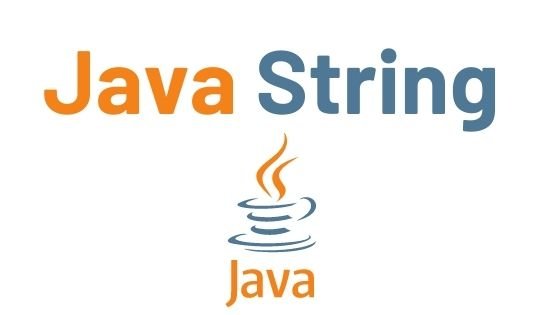In this tutorial, we will learn about Java strings, how to create them, and the various methods of the String class.
A string in Java is a sequence of characters. For example, “Java” is a string made up of the characters ‘J’, ‘a’, ‘v’, ‘a’.
In Java, we use double quotes to represent a string. As an example:
| // create a string String Sample = “Developers Dome”; |
In this case, we’ve created a string variable called Sample. “Developers Dome” is used to initialize the variable.
Example: In Java, create a String.
class Main {
public static void main(String[] args) {
// create strings
String sample = "Kotlin";
String sample1 = "Ruby";
String sample2 = "Java";
// print strings
System.out.println(sample);
System.out.println(sample1);
System.out.println(sample2);
}
}
Output:
| Kotlin Ruby Java |
In the preceding example, we created three strings marked sample, sample1, and sample2. In this case, we are directly creating strings as primitive types.
| Strings are not primitive types in Java (like int, char, etc). On the other hand, all the strings are objects of a predefined class called String. |
Contents
How to create a string object?
String objects can be created in two ways:
- As a string literal
- By using a new keyword
1: String Literal
Double quotes are used to create a Java String literal.
Example:
| String sample=”Developers Dome”; |
When you create a string literal, the JVM first checks the “string constant pool.” If the string is already in the pool, a pointer to the pooled instance is returned. If the string does not already exist in the pool, a new string instance is created and added to it.
| String literals are used in Java to improve Java’s memory efficiency |
2: By new keyword
The literal “DevelopersDome” will be placed in the string constant pool, and JVM will create a new string object in normal (non-pool) heap memory. The variable will be used to refer to a heap object (non-pool).
| String sample =new String(“Welcome”); |
Example: Java String Example
public class Sample{
public static void main(String args[]){
String x="java";//creating string by Java string literal
char ch[]={'s','t','r','i','n','g'};
String y=new String(ch);
String z=new String("DevelopersDome");//Java string by new keyword
System.out.println(x);
System.out.println(y);
System.out.println(z);
}}
Output:
| Java String DevelopersDome |
Methods of Java String
Aside from the methods mentioned above, Java includes a number of string methods. Here are a few examples of these methods:
| Methods | Description |
|---|---|
| contains() | determines whether or not the string contains a substring |
| substring() | returns the string’s substring |
| replace() | substitutes the specified new character for the specified old character |
| replaceAll() | all substrings that match the regex pattern are replaced |
| replaceFirst() | replace the first substring that matches |
| charAt() | returns the character that can be found in the specified location |
| getBytes() | converts the string to a bytes array |
| indexOf() | The position of the specified character in the string is returned. |
| compareTo() | compares two strings in the order of their appearance in the dictionary |
| compareToIgnoreCase() | compares two strings while disregarding case differences |
| trim() | removes any whitespace at the beginning and end of a sentence |
| format() | returns a formatted string |
| split() | divides a string into an array of strings |
| toLowerCase() | converts the string’s case to lowercase |
| toUpperCase() | converts the string’s case to uppercase |
| valueOf() | The string representation of the specified argument is returned. |
| toCharArray() | transforms a string into a char array |
| matches() | determines if the string matches the regex |
| startsWith() | determines if the string starts with the specified string |
| endsWith() | determines if the string ends with the given string. |
| isEmpty() | determines if a string is empty or not |
| intern() | returns the string’s canonical representation |
| contentEquals() | determines if the string is equal to the charSequence |
| hashCode() | returns the string’s hash code |
Strings in Java: immutable
String objects are immutable in Java. Immutable simply means that it cannot be changed or modified. The data or state of a String object can’t be changed once it’s been created, instead, a new String object is created.
- Consider the following scenario to gain a better understanding:
| // Create String String sample = “DevelopersDome”; |
We’ve created a string variable called example in this case. The string ” DevelopersDome” is stored in the variable.
Let’s say we want to modify the string.
| // add another string “Hello” to the previous string example sample = sample .concat(” Hello”); |
- The concat() method is being used to add another string Hello to the previous string.
- It appears that we have the ability to change the previous string’s value. This, however, is not the case. Let’s take a look at what’s going on here.
- JVM takes the first string “DevelopesDome” and adds “Hello” to it to make a new string. It then assigns the new string “DevelopersDome Hello” to the sample variable, leaving the first string “DevelopersDome” unchanged.
Escape character: Java Strings
What is escape character?
When a character in Java is preceded by a backslash (), it is referred to as a Java escape sequence or escape characters. It could contain letters, numerals, punctuation marks, and so on. These characters are interpreted by the Java compiler as a single character that gives the compiler a specific meaning.
Let’s say we need to use double quotes within a string.
| // include double quote String sample = “It is a “Hello” class”; |
- Because double quotes are used to represent strings, the compiler will treat “It is a” as a string. As a result, the code above will result in an error.
- In Java, we use the escape character to solve this problem. As an example:
| // using the escape character String sample = “It is a \”Hello\” class.”; |
Java String Operations
Java String has a number of methods for performing various operations on strings. We’ll take a look at some of the most common string operations.
1: Join Two Java Strings
The concat() method in Java can be used to join two strings. As an example:
class Main {
public static void main(String[] args) {
// first string
String demo1 = "Developers";
System.out.println("First String: " + demo1);
// second string
String demo2 = "Dome";
System.out.println("Second String: " + demo2);
// join two strings
String add = demo1.concat(demo2);
System.out.println("Add String: " + add);
}
}
Output:
| First String: Developers Second String: Dome Add String: DevelopersDome |
2. Get length of a String
The length() method of the String is used to determine the length of a string. As an example:
class Main {
public static void main(String[] args) {
// create string
String sample = "Hello World";
System.out.println("String: " + sample);
// length of sample
int length = sample.length();
System.out.println("Length is: " + length);
}
}
Output:
| String: Hello World Length: 11 |
3: Reverse a String
reverse a string in java,reverse a string in java,reverse a string in java,reverse a string in java,reverse a string in java,reverse a string in java,reverse a string in java, java string length,
In this example, we will reverse a string in java:
public class ReverseString {
public static String reverseString(String str){
char ch[]=str.toCharArray();
String rev="";
for(int i=ch.length-1;i>=0;i--){
rev+=ch[i];
}
return rev;
}
}
public class sample {
public static void main(String[] args) {
System.out.println(ReverseString.reverseString("DevelopersDome"));
System.out.println(ReverseString.reverseString("Hello EveryOne"));
}
}
Output:
| emoDsrepoleveD enOyrevE olleh |
You might like:
Java Object and Java Class with Example
We hope that this article will assist you in understanding all about Java String. We have concentrated on making a basic, meaningful, and easy-to-learn guide to the concepts. Still, if you have any problems regarding this, please post them in the comment section, and we will be glad to assist you.



